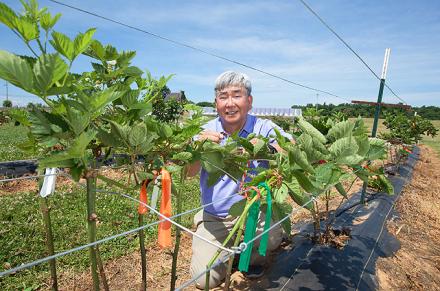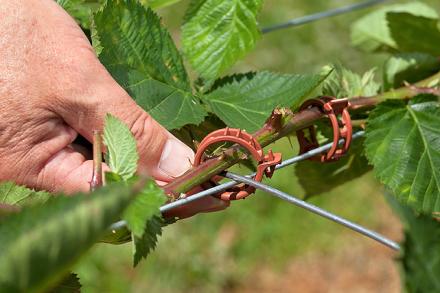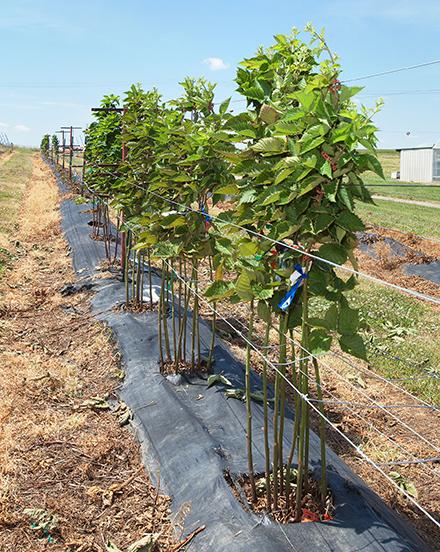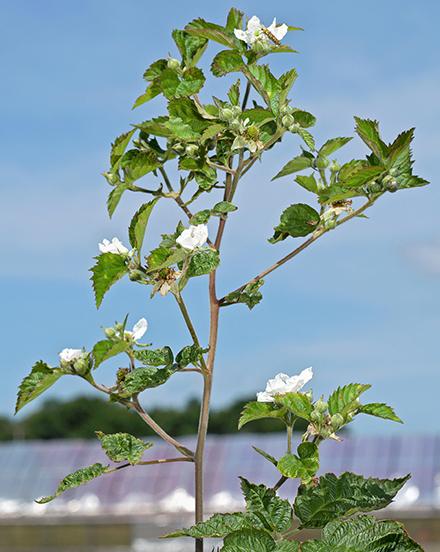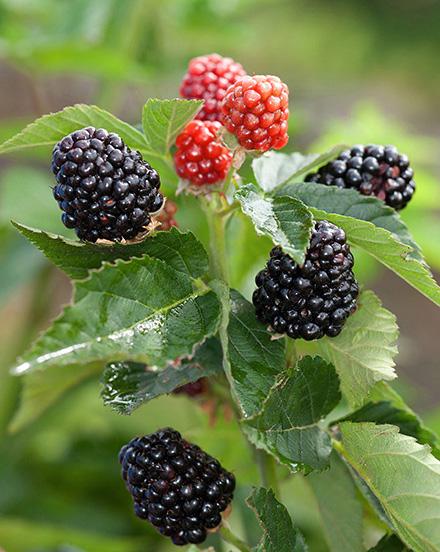A New Way To Train Blackberry Canes
Agricultural Research Service (ARS) horticulturist Fumiomi Takeda of the Appalachian Fruit Research Station in Kearneysville, West Virginia, developed a rotating cross-arm (RCA) trellis and cane-training system for floricane-fruiting blackberry—blackberry plants that produce harvestable fruit after the first year of growth—to help growers overcome environmental challenges, produce more fruit, and reduce labor costs. This system can increase a grower’s income by more than $6,000 per acre—a significant increase.
Blackberry crops are becoming more common in the United States, but commercial production is limited in the Midwest and Northeast because the plant’s canes (branches) are injured or killed by low temperatures. In the southern parts of the country, the challenges are high temperatures and intense sunlight, which can cause fruit to sunburn.
The fruit of conventionally trellised blackberry plants is harvested from both sides of the plant row and in the middle of the wide plant canopy. Harvesting fruit on one side of the row of plants trained to the RCA trellis was 30 percent faster than harvesting fruit from both sides of the row.
ARS horticulturist Fumiomi Takeda has developed a new cane-management method for primocane-fruiting blackberries to increase yield and change their harvesting time. Primocane-fruiting blackberries are cultivated to produce fruit from summer to fall on canes that emerged earlier in spring on first year growth. Here Takeda is clamping the primocanes of ‘Prime-Ark 45’ on a trellis wire so they can be bent and grow along the trellis horizontally instead of growing straight up. (Peggy Greb, D4166-1)
Cane training is performed weekly by placing a clip near the growing tip to ensure the primocanes continue to grow 3 to 4 feet horizontally. (Peggy Greb, D4167-1)
Primocane-fruiting blackberries are typically grown with primocanes trained to grow straight up, and then a flower cluster forms at their tips. Growers could benefit from higher yields by using the trellis system developed by Takeda. (Peggy Greb, D4168-1)
Flowering shoot from a primocane-fruiting blackberry plant growing at the ARS Appalachian Fruit Research Station. Bending and growing canes horizontally has been shown to break the inhibition of growth from lateral buds located below the primocane apex. Each of these lateral flower shoots produces as many as 12 flowers, with each developing into a ripe berry about 6 weeks later. The method and apparatus for primocane management of primocane-fruiting blackberry was patented in 2016 (patent number 9357716). (Peggy Greb, D4169-1)
The patented system significantly increases yield of primocane-fruiting blackberries in September and October and possibly in November and December, when the fruits of domestically grown floricane-fruiting, or second-year summer-fruiting, blackberries are not available and blackberries from Mexico and Guatemala fill grocery shelves. (Peggy Greb, D4034-3)
— By Sharon Durham and Peggy Greb, ARS Office of Communications.
You May Also Like


